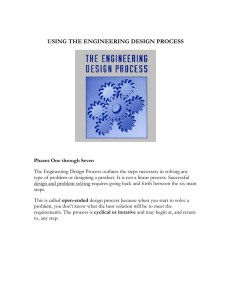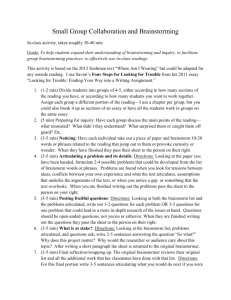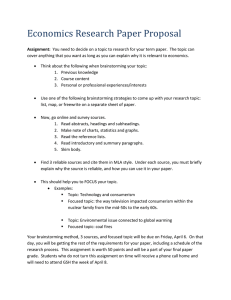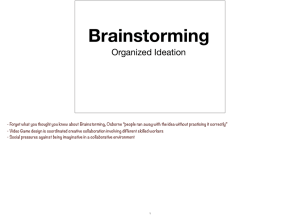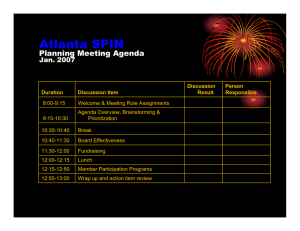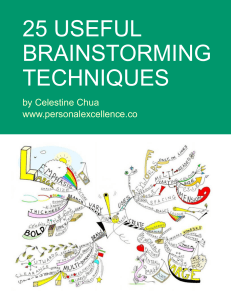Strictly Classified How to Encourage Creative Problem Solving for Employees
advertisement
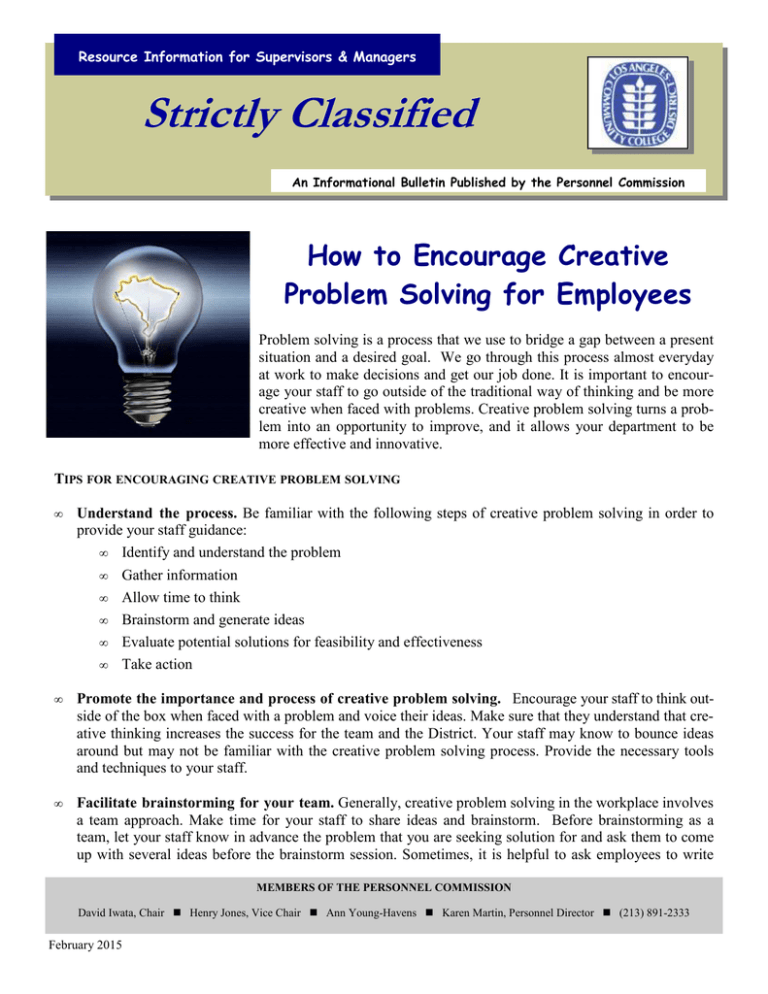
Resource Information for Supervisors & Managers Strictly Classified An Informational Bulletin Published by the Personnel Commission How to Encourage Creative Problem Solving for Employees Problem solving is a process that we use to bridge a gap between a present situation and a desired goal. We go through this process almost everyday at work to make decisions and get our job done. It is important to encourage your staff to go outside of the traditional way of thinking and be more creative when faced with problems. Creative problem solving turns a problem into an opportunity to improve, and it allows your department to be more effective and innovative. TIPS FOR ENCOURAGING CREATIVE PROBLEM SOLVING • Understand the process. Be familiar with the following steps of creative problem solving in order to provide your staff guidance: • Identify and understand the problem • Gather information • Allow time to think • Brainstorm and generate ideas • Evaluate potential solutions for feasibility and effectiveness • Take action • Promote the importance and process of creative problem solving. Encourage your staff to think outside of the box when faced with a problem and voice their ideas. Make sure that they understand that creative thinking increases the success for the team and the District. Your staff may know to bounce ideas around but may not be familiar with the creative problem solving process. Provide the necessary tools and techniques to your staff. • Facilitate brainstorming for your team. Generally, creative problem solving in the workplace involves a team approach. Make time for your staff to share ideas and brainstorm. Before brainstorming as a team, let your staff know in advance the problem that you are seeking solution for and ask them to come up with several ideas before the brainstorm session. Sometimes, it is helpful to ask employees to write MEMBERS OF THE PERSONNEL COMMISSION David Iwata, Chair February 2015 Henry Jones, Vice Chair Ann Young-Havens Karen Martin, Personnel Director (213) 891-2333 down their ideas and collect them anonymously before the session. In this way, they don’t have to be worried about being judged for their ideas. Brainstorming sessions are more effective when people are given sufficient time to think and when they feel their ideas matter. • Provide insights. Your staff may ask you for clarification about the problem and/or how to go about brainstorming. Provide additional resources or contacts that may be helpful in their information gathering and brainstorming process. Keep the objectives and strategies of the District and your department in mind as your staff goes through the creative process. Remind your staff to consider realistic timeframe, available resources, possible constrains and other relevant factors when they are evaluating potential solutions. • Actively solicit for ideas. As a supervisor, one way to demonstrate effective leadership is to lead by example. Consistently and actively soliciting for new ideas and keeping an open mind will promote creative thinking in your department. • Challenge your staff. Encourage your staff to continue looking for more efficient ways to perform their day-to-day duties. Provide constructive feedback and offer different perspectives to challenge their normal way of thinking. • Be supportive. Sometimes, there are may be bumps in the process of creative problem solving. It is important for a supervisor to be supportive and create a safe environment where your staff feel comfortable to share different ideas. • Reinforce actions. Creative problem solving is only effective when the resolutions are being acted on. Provide the time and resources necessary for your employees to implement the creative ideas and follow through. We’d like to hear from you! Please visit the following survey link to provide us with valuable feedback on our bulletins: https://www.surveymonkey.com/s/S2BC586.



